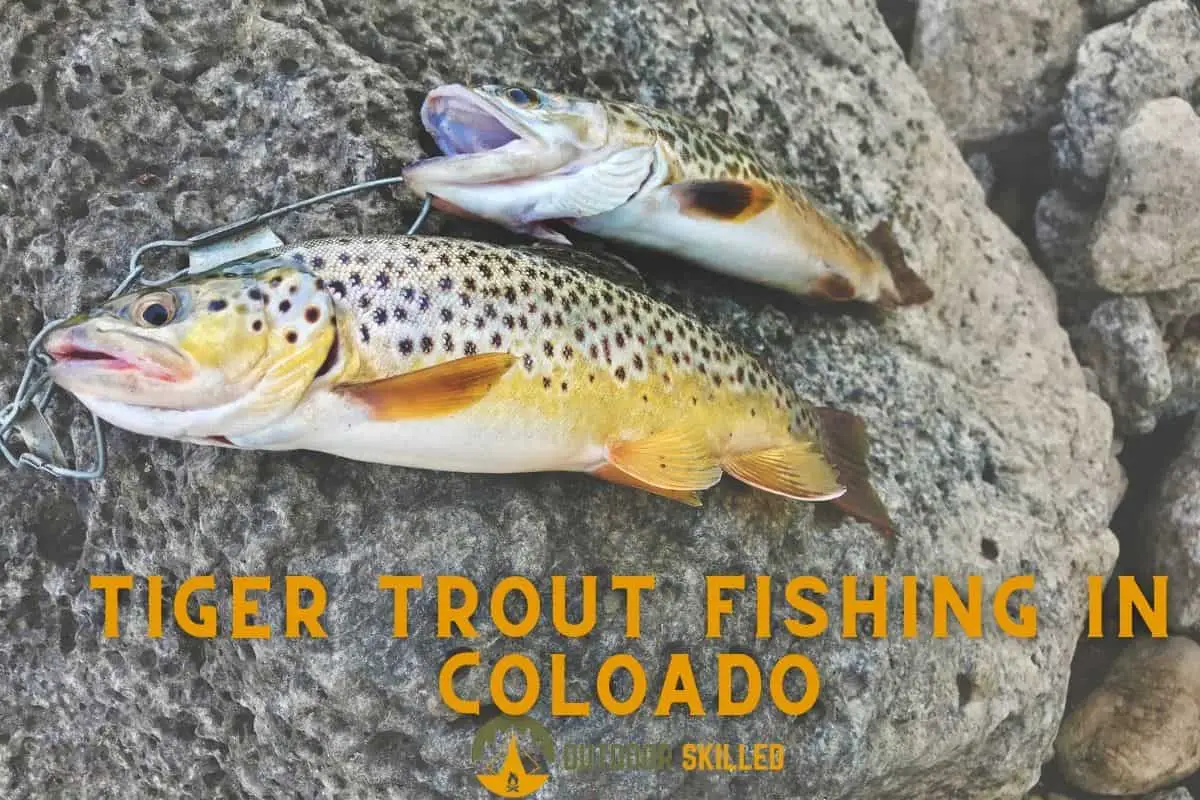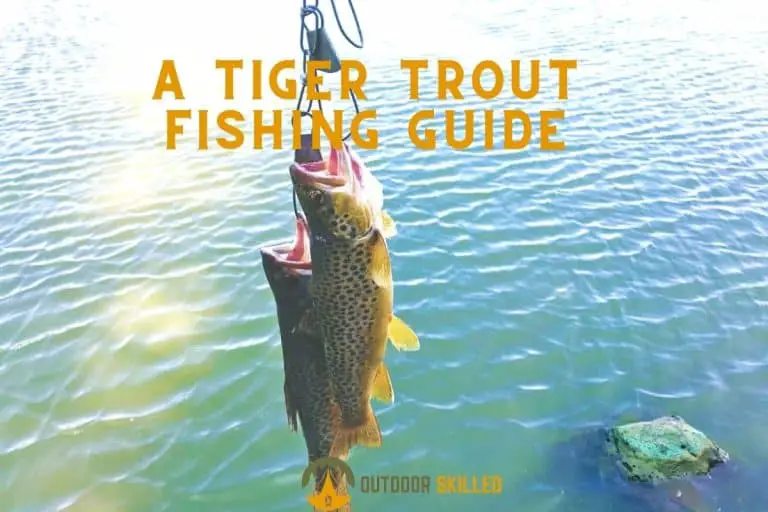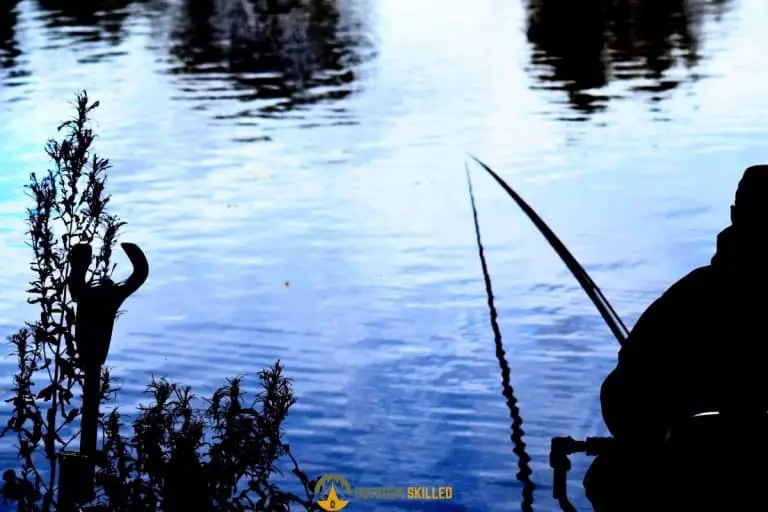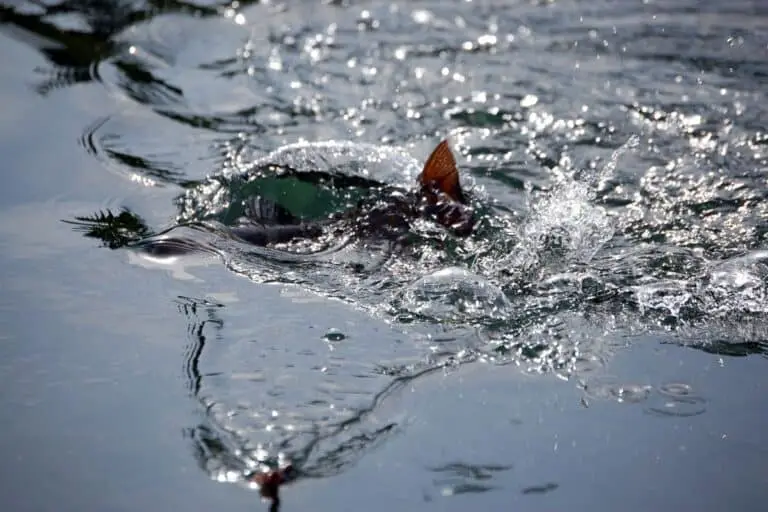Where To Catch Tiger Trout in Colorado? 11 Spots To Check Out Now!
Colorado is one of the best tiger trout habitats across the state due to its suitable cold environment. Because Tiger Trout rarely occurs naturally in the wild, they are stocked as a control measure for stunted brook trout and rough fish, such as suckers, by Colorado Parks and Wildlife. The question is where exactly to find them in Colorado.
So, where to catch tiger trout in Colorado? You can catch tiger trout in Colorado in more than 30 water bodies, to mention a few:
- Vallecito Lake
- Gross Reservoir
- Mount Massive Lakes
- Grand Mesa Lakes
- Estes Park
- Cache La Poudre River
- Beaver Creek
- Road Canyon Reservoir
- East Delaney Butte Lake
- S. Boulder Creek
- Clear Creek Reservoirs
Find out more about colorado trouting in these upcoming sections.
Table of Contents
What Are Tiger Trout?

So, what is a tiger trout? Tiger Trout is a genetic cross between a female brown trout scientifically known as Salmo trutta and a male brook trout scientifically known as Salvelinus fontinalis. It’s considered a wild rarity since it is a hybrid between two different species of trout.
Best Places To Catch Tiger Trout In Colorado
Tiger Trout is heavily stocked in Colorado to enhance the sport fishing experience and for other management purposes. They’re stocked in more than 30 water bodies across the state to get rid of invasive fish species like suckers. Being sterile, the state is able to control its population not to harm the native fish population.
You can find tiger trout in Colorado in places such as:
- Vallecito Lake
- Gross Reservoir
- Mount Massive Lakes
- Grand Mesa Lakes
- Estes Park Lakes
- Cache La Poudre River
- Beaver Creek
- Road Canyon Reservoir
- East Delaney Butte Lake
- S. Boulder Creek
- Clear Creek Reservoirs
Coldwater conditions in Colorado are ideal for tiger trout. They can also be found in moving water. They can swim really quickly which enables them to swim against the current while remaining in oxygen-rich water. Another prime location for tiger trout is small fish concentrations, if you’re able to locate them you’re half done.
It’s quite safe to say that you may find tiger trout in other cold places not mentioned in the previous list. You have to make sure that the water body you’re fishing in is included in a tiger trout stocking program first.
How To Catch Big Trout?
Best Times
Low light conditions from early evening to dawn are ideal for big trout. These conditions conceal big trout, making it difficult for predators and prey to see them. Cloudy days are also a great opportunity to catch them as they provide good shade for them to roam free in the water instead of hiding in a specific place.
Make sure to make use of rainy days as well. Rain increases the oxygen in the water which powers up big trout to go out there and feed more heavily.
Best Spots
The best spots to locate big trout are the transition areas between fast and slow currents. Areas such as bank bump-outs or large rocks are ideal. Moderate water depths of 2 to 6 feet (0.6 to 1.8 meters) have decent holding areas, and pools with enough breath to allow big trout to hunt.
Best Bait
If you’re after big trout make sure to attract them with big meals. Choosing large-sized lures will get big trout to strike. You can use jerkbaits, crankbaits, spoons, or spinner in large sizes and natural colors.
The Best Gear
As for the gear, check out my recommended Trout fishing lines here. You can also check out my recommended Trout Fishing Rods here. This is the gear I’ve used over the years with great success, and I think any of these choices will be a very valuable addition to your fishing gear.
The Best Bait For Tiger Trout
Natural colored baits work well in most conditions, but that doesn’t mean you can’t use unnatural bright colors like pink with an aggressive presentation to entice tiger trout to strike. You can use bait such as spinners, spoons, crankbaits, and jigs.
Silver or gold blades with brown, black, or reddish bodies work wonders for spinners. The same colors in spoons, such as red and gold or silver and blue, produce amazing results.
When fishing with crankbaits, try to match the size and color of the baitfish in the area where you are fishing. Most days, browns, blacks, rainbow trout, and perch colors perform well.
Nightcrawlers and dead minnows work well if you cast them into deep water and slowly retract them. This imitates easy prey that is in distress which arouses trout predator nature and encourages them to strike.
Size your lure appropriately to the size of fish present in the water body. ⅛ to ⅜ ounce sizes are a good choice. It’ll take some time with trial and error to know what best fits the tiger trout where you fish. So don’t stop trying.
Whatever lure you use, rest assured the tiger trout can see it. If it is hesitant to strike the bait, work it more aggressively until you succeed in tempting their competitive behavior rather than their feeding nature.
Salmon eggs also make for an excellent bait for Trout, and I’ve written a separate post on how to fish trout with salmon eggs here, I think you will find it quite helpful.
How To Pick The Best Spots For Catching Tiger Trout
Concentrate on near drop-offs adjacent to tiger trout hunting grounds in 15 to 20 feet (4.5-to-6 meters) of water. If you’re fishing in a stream, you can find them seeking shelter in deep pools and water pockets near under-cut banks or under overhanging trees. You can use small lures into deep water like spinners, jigs, and crankbaits to imitate small fish that trout go after.
You can check out the best fish finder GPS combos here.
Locating natural ambush points will work perfectly in catching tiger trout as well. An ambush point is something on the lake like a large rock pile, a tree, a point, finger, island, cliff, submerged bridge, or a sunken boat. They will use these locations to ambush unsuspecting fry.
Related Questions
Do Trout Bite On Cloudy Days?
Yes, trout bite on cloudy days. On cloudy days, trout will be able to roam in all three layers of the water column, including the surface. While on sunny days, they will have difficulty looking up at the sky to locate prey.
How To Identify Tiger Trout?
You can identify tiger trout by their grayish-brown color and a labyrinth-like pattern on their bodies. They have a brightly colored belly, which is usually a yellow and orange combination. Their tail fin is circular, and their pectoral and pelvic fins are usually the same color as their belly.
Helpful Resources
If you like this article, please share it or pin it, you can find the share buttons below. We will really appreciate it ❤️






![How to Keep Trout Fresh After Catching [For As Long As Possible]](https://outdoorskilled.com/wp-content/uploads/2021/11/fresh-trout-768x512.jpeg)

